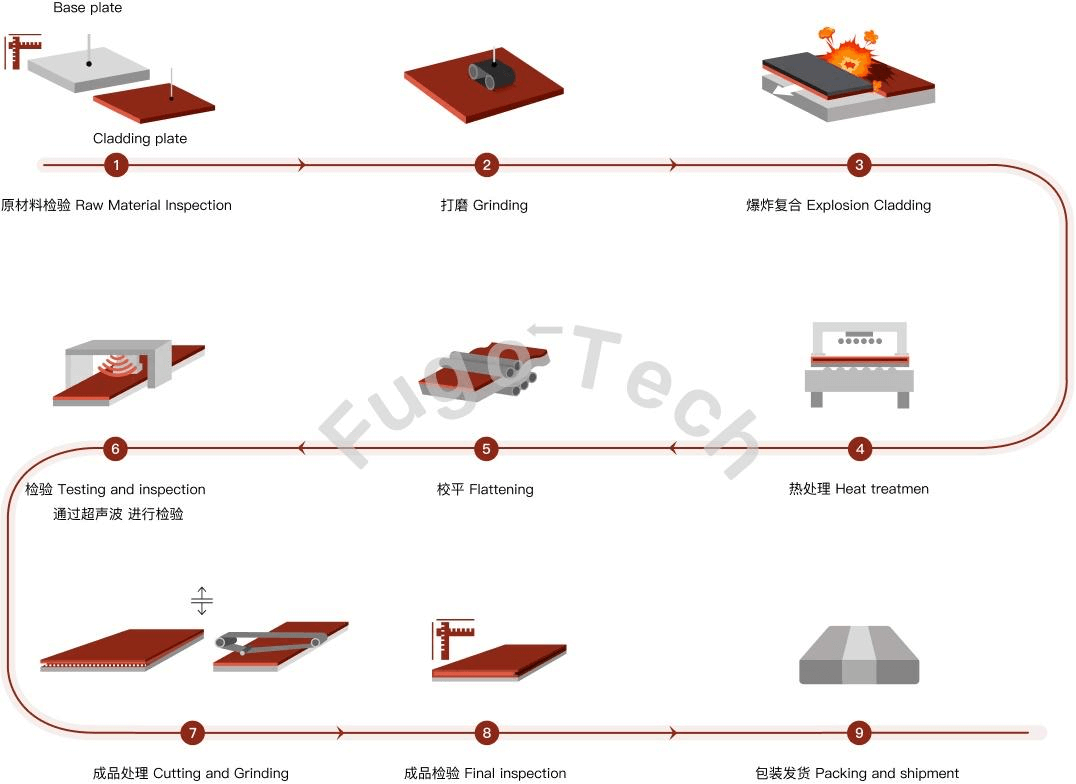


This step involves thoroughly examining the base and cladding materials to ensure they meet the required specifications and quality standards for explosion clad plate production.
The grinding process removes surface impurities, oxides, and irregularities, ensuring a clean and smooth surface for optimal bonding in the explosion cladding process.
In an open area, two well-cleaned metal plates are positioned with a pre-determined gap, with the flyer plate placed on top. Explosives are carefully laid over the flyer plate. Upon detonation, the explosion generates immense energy, causing the plates to collide at high velocity. This high-speed impact results in a strong metallurgical bond, forming a high-performance explosion clad plate.
To enhance the structural integrity of the explosion clad plate, heat treatment is applied to reduce residual stress generated during the explosive bonding process and improve the material’s mechanical properties.
A thorough ultrasonic test (UT) is performed to check the integrity and bonding quality of the explosion clad plate. Additionally, mechanical property testing, including tensile, bending, and impact tests, is conducted to evaluate strength, toughness, and ductility, ensuring compliance with required standards.
After passing all inspections, the explosion clad plate undergoes cutting and machining to achieve the precise dimensions and specifications required for its final application.
A comprehensive inspection is conducted, including appearance checks and dimensional measurements, to verify the quality of the finished explosion clad plate.
The surface of the explosion clad plate is finished and marked according to specifications, followed by proper packaging for delivery or storage.



Fugo Tech is focused on the manufacturing of clad metal plate and distributes the Stainless Steel, Titanium, Nickel Alloy, Zirconium and other non-ferrous metal pipes, fittings, flanges, and fasteners.